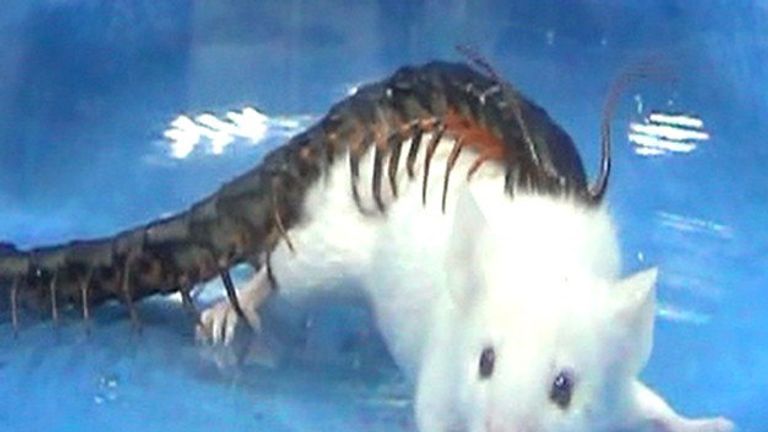Giant centipede can trick its prey into dying - and scientists have just discovered how
Researchers have identified an agonising toxin used by centipedes to take down their prey by forcing their hearts to stop.
Wednesday 24 January 2018 12:12, UK
Scientists have discovered a deadly toxin in centipede venom which it uses to take down much larger prey by forcing their hearts to stop.
The Chinese red-headed centipede is common across East Asia and Hawaii, and can grow to roughly eight inches in length.
It has an agonising bite and unusual venom which contains a number of powerful toxins.
Scientists investigating what allows these toxins to subdue creatures 15 times larger than the centipede believe they have isolated it.
They named it the Ssm Spooky Toxin, the Ssm coming from the centipede's scientific name Scolopendra subspinipes mutilans.
It was discovered through the exhausting process of testing the chemicals in the centipede's venom one by one.
The researchers, from several institutions across China, have reported in their study that the toxin works by blocking potassium from moving in and out of cells.
This blocking prevents the brain from sending signals to the heart to beat, and the animal dies very quickly.
Potassium movement is also important for maintaining many animals' breathing systems, which means the victim of a bite often starts having problems with their airways.
While the venom is rarely fatal for humans, it is agonising. The researchers noted that the bites actually accounted for 10% of all emergency room visits due to natural causes in Hawaii between 2004 and 2008.
A potential antidote exists in a drug called Retigabine, which reestablishes potassium channels when they are blocked.



